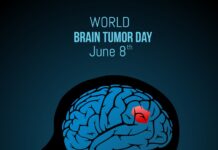A physician turned data scientist, Dr. Pooja Rao currently heads research and development at Qure.ai, a healthcare-AI company that she co-founded in 2016 to create deep learning technology that interprets medical images. She has worked to bring machine learning techniques to healthcare through industry applications and published research across deep learning, bioinformatics, and genomics. Pooja graduated from medical school in Pune, India where she briefly practiced medicine, before earning a PhD in Neuroscience at the Max Planck Research School, Göttingen.
In an exclusive interview to The Indian Practitioner, Dr. Pooja Rao talks about the prospects and challenges concerning Artificial Intelligence in Indian healthcare.
Q1. Please discuss the role and prospects of Artificial Intelligence (AI) in healthcare, particularly Indian healthcare. Do you see it revolutionizing illness management?
Like any other wave of new technology – digitization, internet connectivity, MRI scanners – AI is just one more tool that can potentially be used to benefit patients and healthcare providers. Now that AI is pervasive in our personal lives through applications like face recognition on photographs and voice recognition on our devices it is just a matter of time before the use of AI in healthcare becomes a commonplace.
In countries like India, there is a special role for AI in being able to bridge the diagnostic gap because we have a very low ratio of doctors to patients. This means that India may be one of the first places globally where AI for healthcare is being adopted. It’s important to know the difference between machine learning that is trying to predict the future (estimate the risk of a stroke in the next 5 years or predict how many hospital beds will be empty next month) and machine learning that is trying to automate repetitive tasks (detect and quantify a bleed on a head CT scan or count malaria parasites on a microscope slide). It’s the second kind that is starting to provide value in the Indian healthcare setting, where we have a shortage of trained healthcare professionals outside select urban centers.
We’ve all seen a lot of hype about the AI revolution in the press over the last couple of years. It is now time to move the conversation to what this tool can do for the healthcare practitioner or for the patient, and how well does the tool do its job. Ofcourse, there is potential for AI to transform illness management, and even diagnostics and preventive healthcare. For now, AI is limited to specific narrow tasks and sometimes performs better than the average clinical practitioner at these tasks. As new technology develops and the use of AI in healthcare in India broadens, we have to be mindful that we hold it to these same high standards.
Q2. How would AI impact doctors and what should doctors know about AI? Would doctors and other healthcare professionals need to be specifically oriented and skilled to handle AI?
For many healthcare professionals, the first interaction with healthcare AI will be in the form of AI embedded in medical devices, or within existing software like electronic medical records. These will most likely be so user-friendly that no additional training is required, and AI will operate behind the scenes, doing simple tasks like consolidating EMR information to draw conclusions or quantifying knee cartilage volumes on MRI scans. Gradually, more and more doctors may start seeing AI used for decision support – for example pointing out nodules on chest X-rays.
Eventually, certain tasks that previously required a high level of professional skill, like acquiring ultrasound exams or interpreting fundus images may soon be facilitated by AI, so that people with lower levels of training may be able to do these tasks well. Just as many patients today consult Dr. Google with their symptoms, further in the future there may be a time when AI-based radiology image or lab test interpretation will be available as a commodity online.
Like with any new tool, it is critical that doctors know enough (or are sufficiently trained) about the benefits and risks of the technology to be able to evaluate its appropriateness for use. Some specific questions that we should ask are – How well does it perform under our Indian settings on local data? Does it provide measurable benefits to the healthcare system, or to entities in that system in terms of time saved, better quality or more rapid diagnostics, facilitating innovation or new discoveries?
Q3. How do you see AI influencing medical practice in India? Apart from enhancing diagnostic efficiency and accuracy for better management, can it reduce the cost of treatment for patients, which is crucial for a country like India?
The most straightforward way that AI can reduce costs for patients is to save them trips to distant healthcare facilities, and save them time off work by allowing access remotely to high-quality diagnostics at a time and place of their convenience. This brings to mind the promise of telemedicine that was never really fulfilled. The Babylon AI app, a chat-bot available in the UK has been under fire for many reasons, but it promises to do exactly this – reduce the need for visits to the doctor’s office.
Healthcare AI today is largely in the diagnostic space, interpreting physiological, laboratory or imaging data. Perhaps there is some room to reduce costs in these areas by achieving greater efficiency within existing healthcare facilities. In the long term, there is more potential for cost reduction for patients through AI by targeting treatments better, allowing for more personalized medicine, avoiding unnecessary procedures and medications, and perhaps even contributing to the development of newer cost-effective therapies and diagnostics.
Q4. Could AI contribute to making medical services accessible in underserved areas?
Providing access to diagnostic services at affordable costs to underserved areas is indeed the true promise of current AI. Our doctor-to-patient ratios in rural India are far lower than the national average, and the promise of telemedicine has yet to bear fruit – possibly because the economics don’t work out. This is a gap that can be bridged through AI, provided that AI technology is robustly validated and proven to work well in the local context.
In fact, it is not only rural or geographically remote areas that are underserved. There are “care deserts” globally among certain sub-populations like the elderly, or areas like urban slums in cities that are otherwise well-served by healthcare professionals. These are also areas where AI could contribute to making medical services accessible.
Q5. What is the current state of the development of AI in Indian healthcare? Any pioneering centres/institutes or AI development hubs in India that you could name?
A significant proportion of global pioneering work in healthcare AI development and early trials are happening in India. For example, one of the earliest worldwide deployments of AI to automatically detect diabetic retinopathy happened at Aravind Eye Hospital and Sankara Nethralaya. These institutes were also instrumental in developing this technology in collaboration with Google.
Another example is the use of Qure.ai’s deep learning technology for chest X-ray screening for tuberculosis. This program is underway at district hospitals in a number of Indian aspirational districts, and early results show an increase in patients notified, decreased time to treatment initiation and fewer dropouts.
Q6. With AI-enabled stethoscopes creating new capabilities in diagnosis, which other medical devices that are used for preliminary diagnosis be AI-enabled?
Stethoscopes are one example. ECG devices, fundus cameras, and certainly radiology devices like X-rays, CT scanner and MRI and ultrasound machines are some of the most obvious devices on which to fit an AI algorithm.
However, an even more interesting line of enquiry is: With what new capabilities will AI equip existing devices? What kinds of users can now use these devices, if AI does some of the interpretation and acquisition work? Can AI enable MRIs to exceed their current limits of resolution, or can AI help guide lower-skilled users with acquisition of ultrasound exams? Will this free up highly-skilled and specialized medical practitioners for higher-level tasks?
Q7. Since AI is based on machine learning, what do you think are the shortcomings faced while diagnosing legions of different medical conditions?
We are quite far from a ‘general’ AI that is able to do all the work that a fully trained physician can do. In fact, we are not even close to having AI that can fully replicate the work of a single specialty like radiology. AI has performed at close to or better than physician level performance at certain tasks like detecting diabetic retinopathy on fundus photographs or even detecting TB on chest X-rays. It’s also great at even narrower tasks like precise quantification of ejection fraction and other volumes from various imaging modalities.
This specific or narrow nature is precisely the main shortcoming of current AI technology – we don’t yet have AI that can interpret the whole patient’s history and clinical investigations, or even AI that can interpret a full radiology scan.
Another danger that could come up in the future, if healthcare begins to rely on AI-based technology for certain tasks is the risk of bias. For example, it was already well known that most data that is used to detect skin conditions are on light colored skin – so AI that has been trained on such data will not perform well at picking up lesions on darker skin. If AI is not trained and tested on the populations, that it is intended for, including population subsets, there is a real possibility that it will not perform as expected on some subsets of data.
As with any tool, it is important for the user (in the case the clinician) to get a feel for what the tool does well and where it comes up short.
Q8. To what extent is the government apprised of the importance of AI, and what role can the government play with regards to AI in healthcare?
I believe that the government’s awareness of AI is not more or less than the typical healthcare practitioner. AI has become a buzzword, and it is quite well known that healthcare is one of the most popular areas that people are fond of quoting when speaking of the benefits of AI. So the relevant parts of the government are certainly well apprised of AI. Just like everyone else, government officials find it difficult to determine what is AI and what is the hype masked as AI.
The most useful step that the government could take is to develop a regulatory system for medical devices, including software medical devices like AI. This is no easy task, considering that even experts don’t yet understand the true potential of AI. A locally developed agile, transparent and modern regulatory system for medical devices including AI is well overdue. Setting up such a regulatory system that is sensitive to the needs of patient doctors and AI developers while not stifling innovation is a very tall order. However, in the long run, the development of well-thought out regulatory standards will benefit everyone in the ecosystem. If there is any area that AI developers and healthcare practitioners need to come together to collaborate with the government, this is it.
9


























